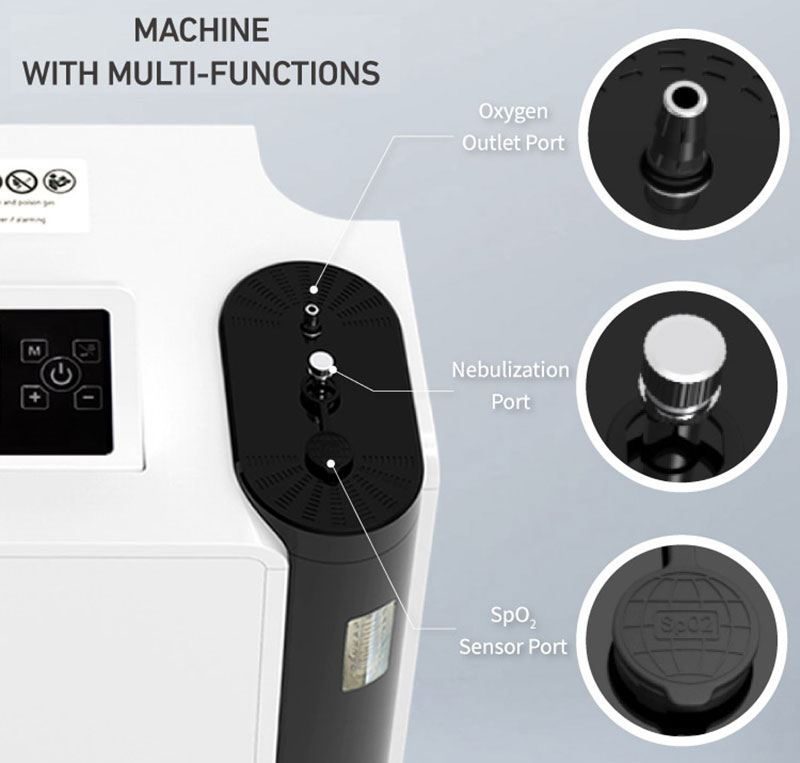Diabetes And Oxygen Therapy

What is diabetes?
Diabetes is a common disease among the elderly due to various reasons. The islet function in the human pancreas is reduced, resulting in decreased insulin secretion, resulting in metabolic disorders of sugar, fat, protein, etc. in the body, and elevated blood sugar. The typical symptoms of diabetes are "three more and one less", namely polydipsia, polyphagia, polyuria, weight loss, fatigue, skin or perineal itching, etc.
Complications of Diabetes
If diabetes is not well controlled, the hemoglobin in the blood is highly saturated with oxygen, and the amount of physical dissolved oxygen decreases, resulting in a decrease in the ability of the blood to transport oxygen, hypoxia in tissue cells, and a series of complications:
1. It affects the cardiovascular and cerebrovascular, which can cause high blood pressure, hyperlipidemia, arteriosclerosis, coronary heart disease, myocardial infarction, cerebral thrombosis, cerebral hemorrhage, etc.; if peripheral blood vessels are involved, lower limb pain, paresthesia, and intermittent damage may occur, which is serious Foot necrosis may occur;
2. If the retinal blood vessels are affected, cataracts, visual disturbances and even blindness will occur;
3. Affect the nervous system, causing peripheral nerve lesions, resulting in limb pain and paresthesia;
4. Severe diabetics may suffer from ketosis, acidosis and coma.
What does oxygen therapy mean for diabetes?
Modern medical research shows that oxygen therapy is of great significance to the recovery of diabetes, mainly in:
1. Oxygen inhalation increases blood oxygen content, vigorous aerobic metabolism, increases glucose consumption, and blood sugar can decrease;
2. Oxygen inhalation increases aerobic metabolism in the body and increases the production of adenosine triphosphate, which can promote the recovery of pancreatic islet function;
3. Inhaling oxygen increases the amount of physically dissolved oxygen in the blood, increases the amount of oxygen delivered to various parts of the body, corrects tissue hypoxia, and alleviates a series of complications caused by hypoxia.
Medical researchers once asked a group of diabetic patients to simply inhale oxygen.
Observe the changes of blood sugar and urine sugar after oxygen inhalation.
The specific method is: the patient inhales oxygen (concentration is more than 90% medical oxygen) 2-4 times a day, 1-2 hours each time, and the flow rate is determined to be 2 liters/minute. After 3 weeks of observation, blood sugar and urine sugar are significantly reduced. decreased, and some even returned to normal, while the symptoms were significantly reduced. No side effects were seen in long-term application.
Note: To achieve the best effect in diabetes treatment, it is best to use drug treatment + food therapy + oxygen therapy
This series of articles is mainly compiled with reference to the contents of the following books on the "China Oxygen Therapy" website. I would like to express my gratitude here!
1. China Oxygen Therapy Network (www.China-LTOT.com)
2. "Life Guidance for Patients with Pulmonary Heart Disease"
Zhang Hongyu Zhang Jihong Editor-in-Chief
Published by People's Medical Publishing House
3. "Experts Answer Stroke"
Yang Xi Chief Editor
4. "Rehabilitation of Chronic Obstructive Pulmonary Disease"
"Diseases of Middle-aged and Elderly People and Oxygen Therapy" Editorial Team
Yang Yong Li Qingzong Editor-in-Chief
